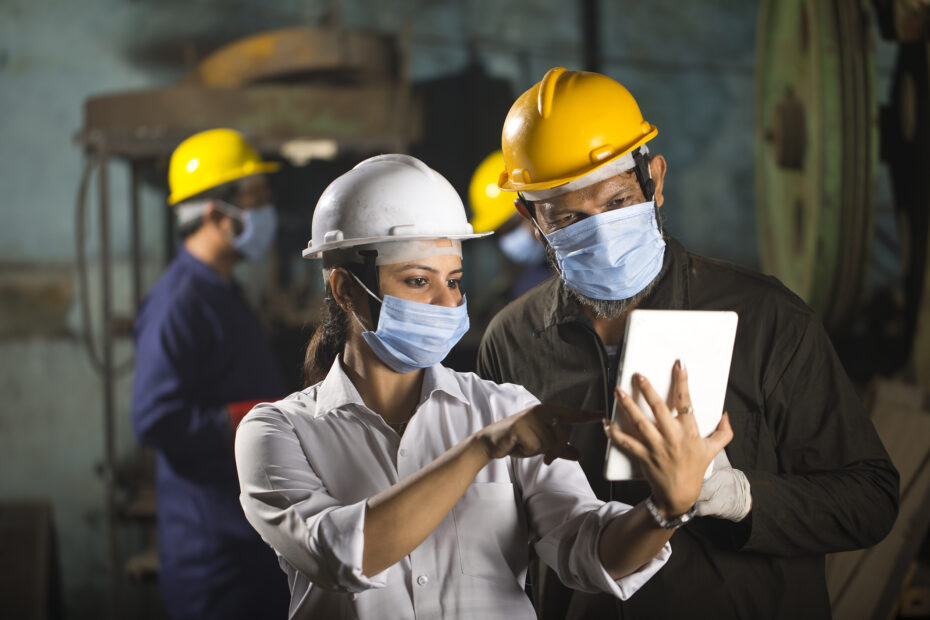Reducing Plant Commissioning, Machine Installation Time & Errors In Oil & Gas Industry

According to Deloitte, the US oil and gas industry has a workforce of close to 1.5 million, most of whom are largely ignored by technology providers. In addition, the short cyclical nature of oil and gas exploration means that 70% of the jobs that were lost in 2020 may not be restored by the end of 2021.
For oil and gas companies, hiring and training inexperienced machine installation and plant commissioning engineers requires both time and resources that are costly in today’s age. Making the situation worse, human errors caused by inexperienced technicians further delay oil and gas machine installation and plant commission projects. Plus, improper installation and commission—say, in the case of oil rig machinery—can be a serious hazard to the overall safety of the workforce present at these sites.
Can a technology-driven frontline workforce productivity platform be the answer to the problems in frontline operations? Let us take a look at it:
7 Ways of Boosting Workforce Productivity and Gaining Greater Visibility in Frontline Operations
Listed below are seven installation and commissioning-related tips that can reduce both implementation time and errors, and reduce costs
Provide accurate installation-related documentation
Be it through standard operating procedures (SOPs) or installation guides, operators need to have access to accurate and consolidated instructions during the entire installation process. On its part, frontline workforce platforms can dynamically retrieve these instructions and procedures from various sources (including ERP systems). This function can assist operators with accurate instructions and checklists for completing the procedure.
Utilize visual workflows
As enhanced versions of the “humble” flowcharts, visual workflows are designed to include automated steps to communicate actions along with rules that define “what happens next.” By using technologies such as augmented reality (AR), virtual workflows can ensure proper installation and commissioning in the oil and gas industry. For example, an AR-enabled headset can be fitted into the technician’s helmet, thus providing hands-free visual instructions for installing or inspecting any equipment.
Executing successful installation and commissioning
To minimize downtime, installation and commissioning operators must ensure that the equipment are installed successfully the first time itself. The AR-driven frontline workforce productivity platforms can help in ensuring operators are competent in executing installation and commissioning work in the first time. Plus, productivity platforms can provide verifiable records of installations and commissioning work for future reference.
Eliminating paperwork
Paper-based or manual processes make it difficult for oil and gas companies to collaborate and share contextual information about project execution – besides adding to manual errors.
By digitizing all the required paperwork, oil and gas companies can effectively reduce manual errors that happen in paper-based processes. This enables the collection of real-time data that can be analyzed for valuable insights. These insights further lead to better-informed decision-making which is not possible in a paper-based process.
Consolidating all related information
Through digitization, multiple information sources including installation guides, technical drawings, and wiring diagrams can be now consolidated and made available to technicians right when they need it through a centralized location. Frontline operators can access this valuable information and improve their productivity; reducing their project execution time.
Increasing collaboration
Through online chats, video calls, conversations etc, installation and commissioning operators and technicians can now resolve their queries using the frontline workforce platform. This encourages collaboration among the team members and information exchange can reduce errors.
Additionally, collaboration tools can provide real-time contextual information about the project execution stage and work status. This in turn ensures a verifiable and accurate audit report about the installation and commissioning project.
Aggregating maintenance data
Using data collection tools, the oil and gas companies can collect maintenance data as well as identify any standard deviations (or anomalies), the cause behind them, and where they occur the most.Over a long period, the collected data from the project work can be aggregated to detect any patterns that can be used to improve the entire process of the machine installation and plant commissioning. In turn, data patterns can be used to improve training and guidance.
Conclusion
Frontline workforce productivity platforms can improve the overall visibility of the frontline operations that have traditionally been challenged by high execution time and human errors.
As a frontline worker platform backed with AR and AI capabilities, Atheer helps in addressing a host of pain points in the oil and gas industry including facility commissioning, equipment installation, preventive maintenance, and much more. As a one-stop solution provider, Atheer brings together the best features for your frontline workforce including AR-based video assistance, chat and group messaging, work instructions, business processes, learning and training, and document sharing.
Click here to find out how Atheer can digitize your frontline operations and deliver maximum safety, quality, and productivity in the oil and gas industry.
Simplify your service network operations
Discover how Atheer can streamline your service network operations and help you deliver a superior customer experience
Request a demo























